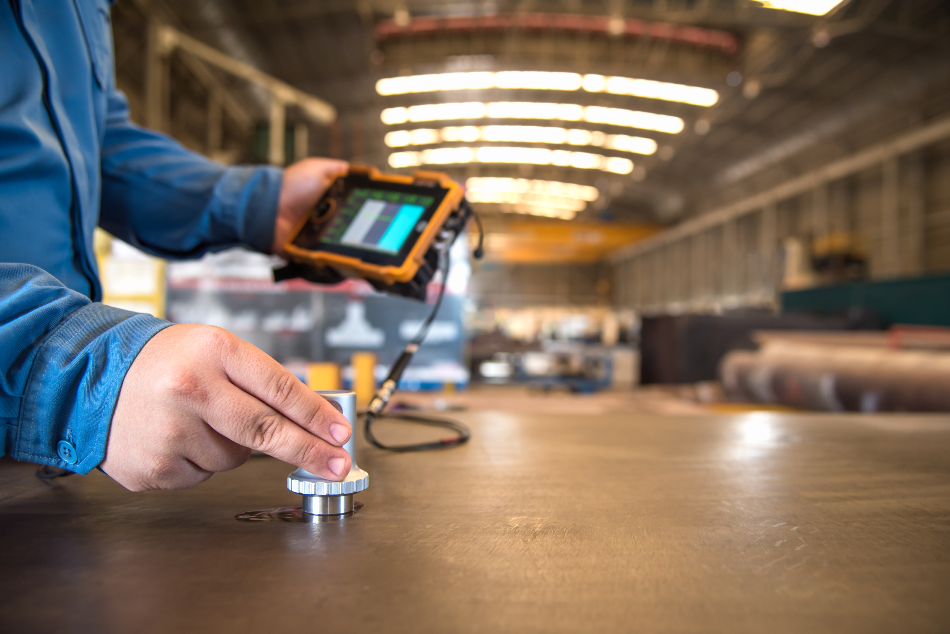In our fast-paced world, the need for quick and accurate inspections has never been more critical. Enter synchronization in wireless inspection devices, a technology revolutionizing how industries conduct inspections. The importance of synchronization cannot be overstated as it ensures data is collected, transmitted, and analyzed efficiently. This transformation is crucial for industries aiming to enhance their **quality assurance** processes.
The process of synchronization involves coordinating the operation of various components within wireless inspection devices. This coordination is vital for maintaining the accuracy and reliability of the data collected. The technology behind this synchronization allows for real-time data transmission, which significantly reduces the time required for inspections, thereby increasing productivity.

The Importance of Synchronization in Inspection Devices
Synchronization ensures that all components of the inspection device work in harmony. This harmony is essential for collecting accurate data, which is critical for making informed decisions. Without synchronization, there’s a risk of data discrepancies, leading to inaccurate results and potentially costly mistakes.
Moreover, synchronization facilitates seamless communication between devices. In large-scale industrial operations, the ability to synchronize multiple devices ensures that data from different points is consistent and reliable. This consistency is crucial for industries such as manufacturing and construction, where precision is key.
How Wireless Technology Enhances Inspection Processes
The integration of wireless technology into inspection devices has brought about significant improvements. These advancements include increased flexibility, as wireless devices can be used in various locations without the need for cumbersome cables. This mobility is particularly beneficial in industries like construction, where inspections need to be carried out in diverse environments.
Furthermore, wireless technology allows for real-time data transmission. This capability means that inspection results can be analyzed immediately, enabling quicker decision-making. The real-time aspect of wireless inspections also means that any issues can be addressed promptly, reducing downtime and increasing efficiency.
Benefits of Real-Time Data Transmission
Real-time data transmission is a game-changer in the world of inspections. It means that data collected from inspections can be analyzed as it is gathered, allowing for immediate feedback and action. This immediacy is particularly beneficial in industries such as oil and gas, where delays can be costly.
Additionally, real-time data transmission enhances collaboration. Teams can work together more effectively, as they all have access to the same up-to-date information. This improved collaboration leads to better decision-making and a more efficient inspection process overall.
Challenges in Synchronization and How to Overcome Them
Despite its many benefits, synchronization in wireless inspection devices does present challenges. One of the primary challenges is ensuring that all devices are compatible and can communicate effectively. This compatibility is crucial for maintaining the accuracy and reliability of the data collected.
To overcome these challenges, industries need to invest in high-quality devices and ensure that their systems are regularly updated. Regular maintenance and updates ensure that devices can continue to communicate effectively and that synchronization is maintained. More on how frequently inspections should be performed can be found in this external resource.
Applications of Wireless Inspection Devices
Wireless inspection devices are used in a wide range of industries. In manufacturing, they are used to inspect products for defects, ensuring that only high-quality products reach the market. In construction, these devices are used to inspect buildings and infrastructure to ensure they meet safety standards.
Another application is in the oil and gas industry, where wireless inspection devices are used to inspect pipelines and equipment. These inspections are crucial for preventing accidents and ensuring the safe operation of facilities. Additionally, wireless devices are used in the food and beverage industry to inspect production lines and ensure compliance with health and safety regulations.
Case Study: Wireless Inspection in Manufacturing
In the manufacturing industry, synchronization in wireless inspection devices has proven to be highly beneficial. One company implemented a system of synchronized wireless devices to inspect their production line. This implementation resulted in a significant reduction in inspection time and an increase in the accuracy of their inspections.
The company reported that the synchronization of their devices allowed for real-time data analysis, enabling them to identify and address issues immediately. This prompt action led to a decrease in product defects and an increase in customer satisfaction.
Future of Synchronization in Wireless Inspection Devices
The future of synchronization in wireless inspection devices looks promising. As technology continues to advance, we can expect even greater improvements in synchronization capabilities. These advancements will likely include increased compatibility between devices and more efficient data transmission methods.
Moreover, as industries continue to recognize the benefits of synchronization, we can expect to see wider adoption of this technology. This adoption will lead to further innovations and improvements in the quality and efficiency of inspections.
For more on how technological advancements are impacting other industries, check out this internal link.
Conclusion
In conclusion, synchronization in wireless inspection devices is a vital technology for modern industries. It ensures the accuracy and reliability of inspections, enabling industries to maintain high standards of quality and safety. As technology continues to advance, the benefits of synchronization will only increase, making it an essential tool for industries worldwide.

FAQs
What is synchronization in wireless inspection devices?
Synchronization in wireless inspection devices involves coordinating the operation of various components within the device to ensure accurate data collection and transmission.
Why is synchronization important in inspection devices?
Synchronization is crucial because it ensures that all components of the device work together harmoniously, leading to accurate and reliable data collection.
What are the challenges of synchronization in wireless inspection devices?
Some challenges include ensuring device compatibility and maintaining effective communication between devices. Regular updates and maintenance can help overcome these challenges.
This article contains affiliate links. We may earn a commission at no extra cost to you.
